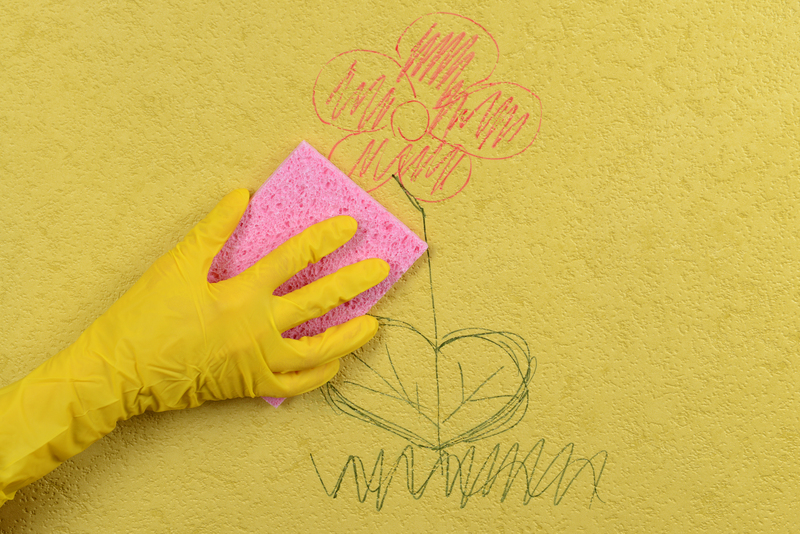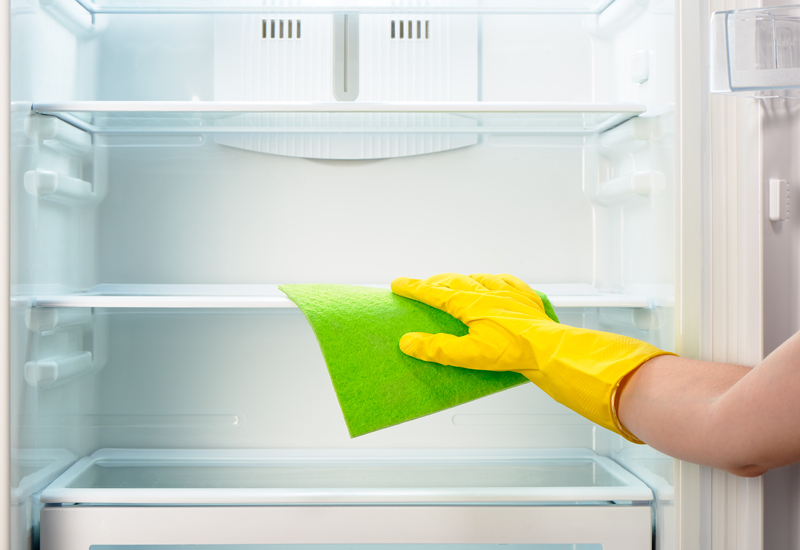The Ultimate Guide to a Mold-Free Bathroom
Posted on 02/09/2025
The Ultimate Guide to a Mold-Free Bathroom
A mold-free bathroom isn't just visually appealing--it's essential for your health, wellbeing, and the longevity of your home. Mold loves to thrive in warm, humid places, and with ever-present water, the bathroom is mold's favorite spot. In this comprehensive guide, we'll explore everything you need to know about bathroom mold prevention, treatment, and maintenance so you can enjoy a fresh, healthy, mold-free environment.
Why Is Mold a Problem in Bathrooms?
Bathrooms provide the perfect environment for mold growth: abundant moisture, warmth, and organic materials (like soap scum or dust) that act as food sources. Mold issues can develop quickly, especially if ventilation is poor or leaks go unnoticed. Here are key reasons why a mold-free bathroom should be a top priority:
- Health Risks: Mold spores may trigger allergies, respiratory issues, headaches, and sinus congestion, particularly in individuals with compromised immune systems.
- Structural Damage: Persistent mold can weaken drywall, wood, and even tiles, leading to expensive repairs.
- Unpleasant Odors: That musty smell is a classic sign of mold and can make your bathroom unwelcoming.
- Aesthetic Concerns: Mold stains and spots are unsightly, diminishing the appeal and value of your home.

Common Types of Bathroom Mold
Understanding the types of bathroom mold can help you identify problems early:
- Cladosporium: Usually black or green, found on damp surfaces like grout or painted walls.
- Aspergillus: Commonly grows on shower walls, ceilings, and tiles.
- Stachybotrys (Black mold): Relatively rare but more dangerous, flourishes in areas with chronic moisture and poor ventilation.
How to Prevent Bathroom Mold Growth
The secret to a mold-free bathroom is prevention. Here are proven techniques to keep mold at bay:
1. Optimize Ventilation
- Install a high-quality bathroom exhaust fan and run it during and after every shower for at least 30 minutes.
- If possible, open windows to let fresh air circulate and reduce humidity.
- Consider a dehumidifier for bathrooms with persistent moisture problems.
2. Control Moisture Levels
- Fix leaking fixtures, pipes, or toilets immediately to avoid excess water accumulation.
- Dry the shower, tub, and sinks with a squeegee or towel after each use.
- Keep bathroom rugs, towels, and curtains clean and dry--avoid letting them stay damp for long.
3. Use Mold-Resistant Materials
- Opt for mold-resistant paint and drywall, especially in new builds or renovations.
- Seal grout lines with grout sealer every six months to block moisture penetration.
- Choose glass or plastic shower doors over curtains, as they are easier to keep dry and clean.
4. Maintain Cleanliness
- Clean bathroom surfaces weekly with a mild cleaner or vinegar solution.
- Scrub tile grout, shower corners, and under sinks where moisture and dirt accumulate.
- Declutter countertops and keep unnecessary items to a minimum, reducing areas for mold to hide.
Daily and Weekly Routines for a Mold-Free Bathroom
Establishing simple cleaning routines is crucial for ongoing mold prevention in bathrooms. Here are recommended practices:
Daily Steps
- Wipe down shower walls and tub after each use.
- Hang towels immediately and allow them to fully dry.
- Run the exhaust fan or open a window after every shower.
- Check for pooled water under sinks and around toilets.
Weekly Checklist
- Clean shower, tiles, and tub with an anti-mold spray or a mixture of vinegar and water.
- Launder bath mats, curtains, and towels.
- Inspect and clean bathroom exhaust fan covers and vents.
- Vacuum or lightly dust corners, especially near windows or behind toilets.
Best Products for Mold Control in Bathrooms
There are a variety of bathroom mold prevention products to consider. Look for these when shopping:
- Mold-resistant paints: Designed specifically for high-moisture areas, they include antimicrobial agents.
- Grout sealers: Protect tile grout from absorbing moisture and harboring spores.
- Specialty bathroom cleaners: Some contain hydrogen peroxide or bleach, which are effective against mold.
- Natural cleaners: White vinegar and baking soda are excellent, non-toxic options that prevent mold growth.
Pro tip: Avoid mixing bleach and ammonia or bleach and vinegar, as this can produce harmful fumes.
How to Remove Existing Bathroom Mold
If you spot mold, act immediately to rid your bathroom of mold and prevent further spread. Here is a proven step-by-step process:
Step 1: Gather Supplies
- Protective gloves, mask, and eyewear
- Spray bottle
- White vinegar, hydrogen peroxide, or specialized bathroom cleaner
- Scrub brush or old toothbrush
- Microfiber cloths or disposable towels
Step 2: Ventilate the Area
- Open a window or run the bathroom fan to avoid inhaling any spores or fumes.
Step 3: Apply Mold Remover
- Spray the affected area thoroughly with your chosen cleaner.
- Let it sit for 10-15 minutes to penetrate mold and grime.
Step 4: Scrub and Wipe Clean
- Use a scrub brush on tiles, grout, and silicone areas.
- Wipe clean with a damp cloth and dry the area afterward.
Step 5: Prevent Reoccurrence
- Address any leaks or humidity problems immediately.
- Apply a mold-resistant sealer if necessary.
Note: For extensive mold (over 10 square feet), or if the mold returns after cleaning, consult a professional mold remediation service.
Common Mistakes That Encourage Bathroom Mold
Even the cleanest homes can fall victim to mold if you make these common mistakes:
- Shutting off the fan too soon: Let the exhaust fan run for at least 20-30 minutes after every bath or shower.
- Leaving wet clothes or towels: Hanging damp fabrics in the bathroom increases humidity and mold risk.
- Skipping routine cleaning: Overlooking regular cleaning allows mold to establish itself and spread quickly.
- Ignoring leaks: Even small drips can encourage mold, especially in hidden places.
- Poor renovation practices: Using standard drywall, unsealed grout, or low-quality paint makes it easier for mold to get a grip.
When to Call a Mold Removal Professional
While most small mold problems can be handled with DIY techniques, some situations require professional intervention:
- Extensive spread (covering more than a few square feet)
- Mold inside your walls or under the floor
- Recurring growth despite cleaning and prevention efforts
- Strong, persistent musty odors
- Family members experiencing intensified allergies or respiratory issues
Professional mold remediation experts have the tools, training, and protective equipment to remove large infestations safely and recommend repairs to keep your bathroom mold-free for good.
Renovating for a Mold-Free Bathroom
Planning a bathroom remodel is the perfect opportunity to integrate mold resistant bathroom features:
- Upgrade Ventilation: Invest in a powerful, quiet exhaust fan with a built-in humidity sensor.
- Choose Non-Porous Surfaces: Opt for tile, sealed stone, or solid-surface materials instead of drywall and wood.
- Install Vapor Barriers: Use moisture-mitigating barriers behind shower walls to keep water from seeping into the structure.
- Seal Everything: Grout, caulk, and paint should all be water-repellent and kept in good repair.
- Lighting Matters: Mold hates light. Maximize natural and artificial lighting where possible.

FAQs About Mold-Free Bathrooms
Can I permanently eliminate mold in my bathroom?
A: While it's nearly impossible to guarantee that mold will never return, maintaining strict moisture control, cleanliness, and adequate ventilation will drastically reduce the risk of mold growth.
Is bleach or vinegar better for removing bathroom mold?
A: Both are effective, but vinegar is a safer, eco-friendly solution for routine cleaning, while bleach is stronger for tough stains. Never mix the two.
What are the first signs of mold in my bathroom?
A: Black, green, or brown spots on tiles, grout, or ceilings, musty odors, or peeling paint are all warning signs of mold.
Final Thoughts: Embrace a Fresh, Mold-Free Bathroom
Achieving a mold-free bathroom is absolutely attainable for every home. By prioritizing ventilation, moisture control, and regular cleaning, you can banish unsightly spots and dangerous spores for good. Stay vigilant, act fast at the first signs of mold, and incorporate the right materials and habits to enjoy a healthy, beautiful, and mold-free oasis every day.
- Monitor humidity and use fans regularly
- Clean surfaces weekly and watch for leaks
- Choose high-quality, mold-resistant materials
- Act promptly at the first sign of trouble
Ready to create your mold-free bathroom? Start with the simple steps above and commit to a healthier, fresher home!



